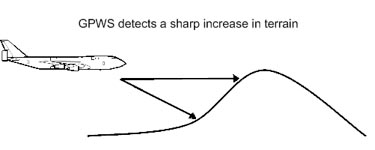Glossary of Aviation Terms | GPWS
GPWS | Paramount Business Jets
The Ground Proximity Warning System (GPWS), also known as the Ground-Collision Warning System, is a system designed to alert pilots if their aircraft is in immediate danger of flying into the ground. The system uses a radar altimeter (a device used to measure the altitude of the aircraft) to find the aircraft’s elevation. When a certain "deck" elevation is reached, the system automatically warns the pilot to pull the plane up to avoid the obstacle. The deck elevation can be set by the pilot or the company that owns that aircraft, and depends on the type of aircraft and the regulations regarding that specific type of aircraft. The GPWS altimeter is combined with a GPS system that can accurately predict the elevation of the terrain directly in front of the aircraft. If this system detects a sharp rise in the ground topography, it will warn the pilot that a crash is possible if he does not take evasive action. In the commercial airline industry, a GPWS is mandatory for all aircraft, and strict policies are to be followed if the warning system goes off. Both pilots are to respond and act accordingly once a warning has been issued. GPWS is not legally required in any propeller-driven aircraft that is not operated by the commercial aviation industry, meaning that most personal light aircraft are not equipped with this system. The system is required on turbine and jet-powered aircraft that have ten or more passenger seats. Fast-flying military aircraft are usually equipped with an enhanced version of the GPWS because a prediction is required much more quickly than slower passenger aircraft.

Explore More Aviation Terminology
- Airport | Paramount Business Jets
- Helicopter | Paramount Business Jets
- Floats | Paramount Business Jets
- Class D Airspace | Paramount Business Jets
- Avionics | Paramount Business Jets
- Private Airport | Paramount Business Jets
- Flight Plan | Paramount Business Jets
- Waiting Time | Paramount Business Jets
- Pilot in Command | Paramount Business Jets
